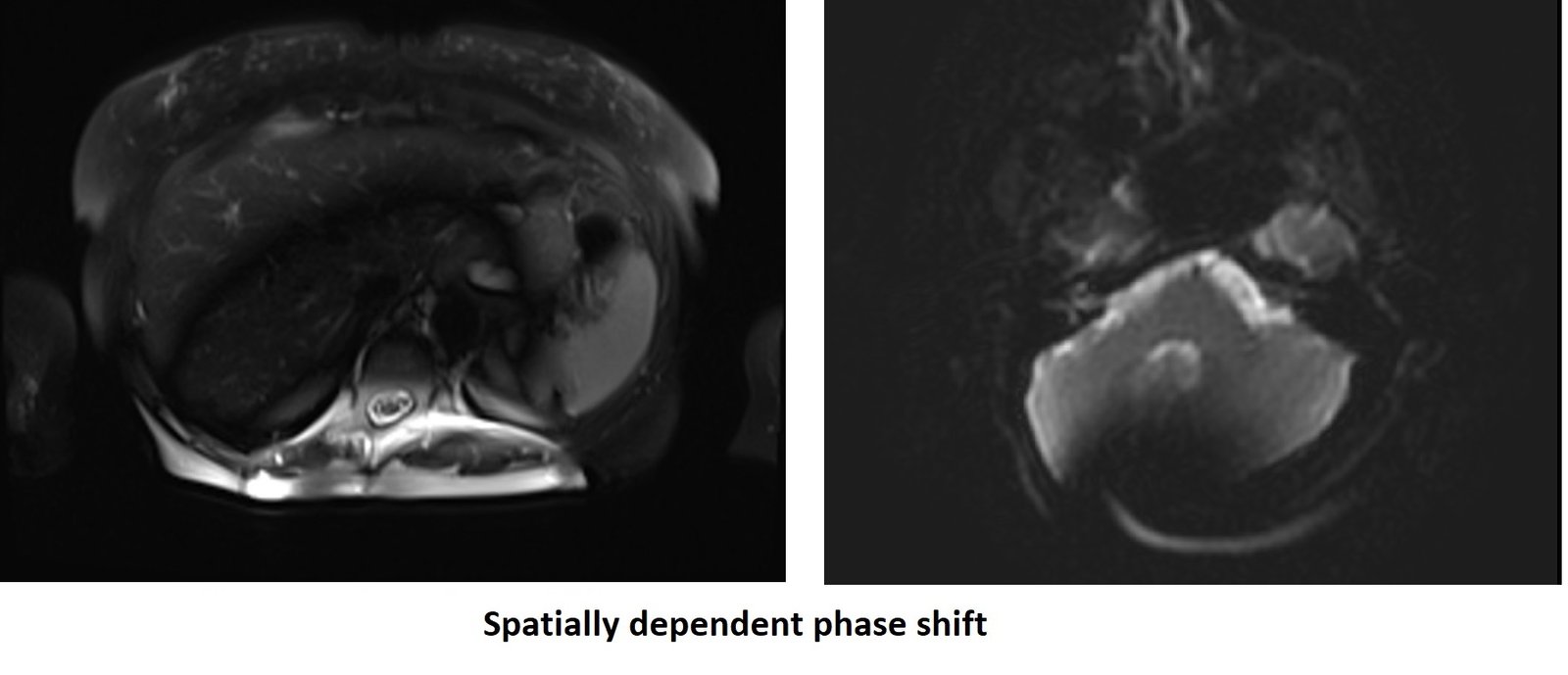MRI Spatially Dependent Phase Shift Artifact
Spatially dependent phase shift artifact, also known as magnetic susceptibility artifact, is a common artifact in MRI that occurs due to magnetic field inhomogeneities caused by variations in the magnetic susceptibility of tissues and other objects in the body. This results in a distortion or blurring of the image, particularly in regions near air-tissue interfaces or metal objects.
The appearance of the artifact can vary depending on the location and severity of the field inhomogeneities, but it typically manifests as signal loss or distortion in affected areas.

Here are some strategies to minimize or avoid Spatially dependent phase shift artifact :
Increase receiver bandwidth: By increasing the receiver bandwidth, you can reduce the duration of the readout gradient, which in turn decreases the susceptibility to phase shift artifacts. Higher receiver bandwidth helps to acquire data faster and minimize the time during which phase inconsistencies can occur.
Using metal artifact reduction sequences: MARS (Magnetic field Adjustment to Reduce Susceptibility) is a technique that can be used to minimize spatially dependent phase shift artifacts in MRI. It involves adjusting the magnetic field homogeneity to reduce susceptibility-induced artifacts.
Use higher-order shimming: Shimming is a technique used to minimize magnetic field inhomogeneities. Higher-order shimming can help to reduce the effects of spatially dependent phase shift artifact.
Use phase-encoding gradients in both directions: Spatially dependent phase shift artifact can be minimized by using phase-encoding gradients in both directions. This technique is known as bipolar encoding, and it helps to cancel out the effects of phase shift.
Use shorter echo times: Phase shift artifact is more likely to occur with longer echo times. By using shorter echo times, you can reduce the likelihood of this artifact occurring.
References:
- Haacke EM, Brown RW, Thompson MR, Venkatesan R. Magnetic resonance imaging: physical principles and sequence design. John Wiley & Sons; 2018.
- McRobbie DW, Moore EA, Graves MJ, Prince MR. MRI from Picture to Proton. Cambridge University Press; 2017.


